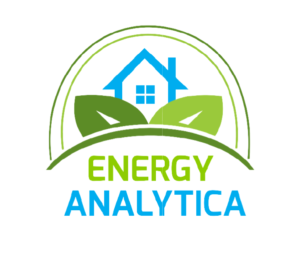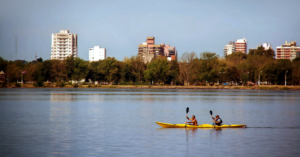In order to protect occupants’ health following occupancy, this is intended to encourage practises that guarantee healthy air quality at the conclusion of construction, after all finishes are installed. It describes how to remove pollutants from construction materials and activities from the air.
CALGreen Code Section A5.504.2: IAQ postconstruction.
After all interior finishes have been installed, flush out the building by supplying continuous ventilation with all air handling units at their maximum outdoor air rate and all supply fans at their maximum position and rate for at least 14 days.
1. During this time, maintain an internal temperature of at least 60°F, and relative humidity no higher than 60 percent. If extenuating circumstances make these temperatures and humidity limits unachievable, the flush-out may be conducted under conditions as close as possible to these limits, provided that documentation of the extenuating circumstances is provided in writing.
2. Occupancy may start after 4 days, provided flush-out continues for the full 14 days. During occupied times, the thermal comfort conditions of Title 24 must be met.
3. For buildings that rely on natural ventilation, exhaust fans and floor fans must be used to improve air mixing and removal during the 14-day flush-out, and windows should remain open.
4. Do not “bake out” the building by increasing the temperature of the space.
5. If continuous ventilation is not possible, flush-out air must total the equivalent of 14 days of maximum outdoor air. The equivalent of 14 days of maximum outdoor air (the target air volume) shall be calculated by multiplying the maximum feasible air flow rate (in ft3/m) by 14 days (20,160 minutes). The air volumes for each period of ventilation are then calculated and summed and the flush-out continues until the total equals the target air volume.
Intent:
The intent of this measure is to promote practices that ensure healthy air quality at the close of construction, after all finishes are installed, to protect occupant health after Certification of Occupancy or Temporary Occupancy. It spells out the means of flushing out air contaminated by pollution from materials and construction activities. It is intended to allow early occupancy when needed by an owner, providing flush-out recommendations for that situation. Title 8, Department of Industrial Relations – Division of Occupational Safety and Health contains additional regulations for the protection of worker safety.
Compliance Method:
Designers should include the requirements for flush-out (including whether by mechanical or natural means), contingency plans, early occupancy, etc., in the project specifications for ventilation, and others as applicable. The contractor should be responsible for employing the provisions on the job and being able to demonstrate that the practices are being followed if requested by the enforcing agency. Extenuating circumstances should be documented in writing, and the contractor should be able to verify the dates or volume equivalencies of the 14-day flush-out period.
Enforcement:
Plan intake: The plan reviewer should confirm in the construction documents directions for flush-out practices to be followed by the contractor.
On-site enforcement: The inspector should verify which flush-out practices the contractor is to use on the project, per the permit set, and ask for documentation of their employment.
(Excerpted from ‘Guide to the 2022 California Green Building Standards Code Nonresidential’ – Appendix A5)




